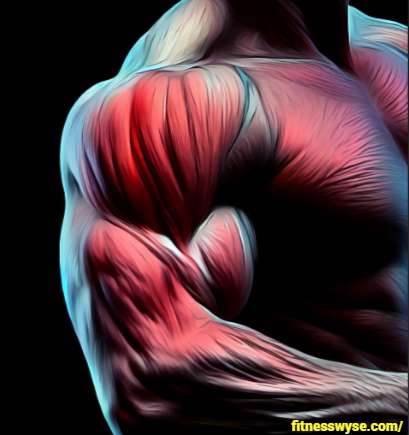Tricep Injuries: An Overview

Table of Contents
1. Understanding Tricep Injuries
The tricep muscle, located on the back of your upper arm, plays a crucial role in extending your elbow and providing stability to your shoulder. Tricep injuries can occur due to various factors, including overuse, trauma, or sudden excessive force.
Common Causes of Tricep Injuries
- Overexertion: Pushing your triceps beyond their capacity, especially during weightlifting or resistance training, can lead to strains or tears.
- Sudden Impact: Traumatic incidents like a fall or direct blow to the tricep area can cause acute injuries.
- Repetitive Motion: Engaging in repetitive motions, such as repetitive overhead activities, can lead to overuse injuries.
Types of Tricep Injuries
Tricep injuries encompass a range of conditions, including:
- Tricep Strains: These occur when the tricep muscle fibers are stretched or torn, leading to pain and weakness.
- Tricep Tears: A more severe form of injury where the tricep muscle is partially or completely torn, often requiring surgical intervention.
- Tendonitis: Inflammation of the tricep tendon, which connects the muscle to the bone, can cause pain and restricted movement.
Common Symptoms
Identifying tricep injuries involves recognizing common symptoms such as:
- Pain, often at the back of the upper arm
- Swelling or bruising
- Weakness when extending the elbow
- Difficulty lifting objects or pushing with the arm
Diagnosis and Medical Evaluation
If you suspect a tricep injury, it’s crucial to consult a healthcare professional. They will perform a physical examination, possibly order imaging tests like X-rays or MRIs, and assess the severity of the injury. Accurate diagnosis is essential for determining the most suitable tricep repair protocol.
This comprehensive overview provides a foundation for understanding tricep injuries, their causes, types, symptoms, and the importance of seeking proper diagnosis and treatment.
2. Understanding the Tricep Muscle
- Anatomy of the Tricep Muscle
The tricep muscle is composed of three heads: the long head, lateral head, and medial head. Each head has a specific attachment point and function, collectively allowing for elbow extension and shoulder stability. - Function of the Tricep Muscle
The primary function of the tricep muscle is to extend the elbow joint, which straightens the arm. It also plays a vital role in stabilizing the shoulder joint during various upper body movements. - Importance in Daily Activities
The tricep muscle is essential for activities that involve pushing, lifting, and extending the arm. It contributes to everyday tasks such as lifting objects, pushing doors, and performing overhead movements.
Understanding the anatomy and function of the tricep muscle is crucial for comprehending the impact of tricep injuries and the need for effective repair protocols.
3. Types of Tricep Injuries

- Tricep Strains :
- Tricep strains occur when the muscle fibers are stretched or partially torn. They are often characterized by localized pain and discomfort in the back of the upper arm. Strains can range from mild to severe, depending on the extent of muscle damage.
- Tricep Tears :
- Tricep tears are more severe injuries where the tricep muscle is partially or completely torn. These injuries often result from sudden trauma or overexertion. Complete tears may require surgical intervention for repair, while partial tears may be treated conservatively.
- Tricep Tendonitis :
- Tricep tendonitis involves inflammation of the tricep tendon, which connects the muscle to the bone. This condition can cause pain, tenderness, and limited range of motion in the affected arm.
Understanding the different types of tricep injuries, their characteristics, and their potential severity is essential for appropriate diagnosis and treatment planning.
Read more : CHEST SHOULDERS AND TRICEPS IN P90X
4. Symptoms and Diagnosis
- Common Symptoms :
- Recognizing the signs of a tricep injury is essential for seeking timely medical attention. Common symptoms may include:
| Symptoms | Description |
| Pain | Often located at the back of the upper arm. |
| Swelling or Bruising | Visible signs of tissue damage in the affected area. |
| Weakness | Difficulty extending the elbow or lifting objects. |
| Limited Range of Motion | Inability to fully straighten the affected arm. |
Diagnosis and Medical Evaluation :- Accurate diagnosis is crucial for determining the appropriate tricep repair protocol. The evaluation process may include:
| Diagnostic Steps | Description |
| Physical Examination | Assessment of the injured area for tenderness and swelling. |
| Imaging Tests (X-rays, MRI) | To visualize the extent of muscle or tendon damage. |
| Strength and Range of Motion | Assessing muscle strength and joint mobility. |
| Medical History and Discussion | Discussing symptoms, the onset of pain, and potential causes. |
Recognizing symptoms and undergoing a thorough medical evaluation aids in diagnosing tricep injuries accurately, allowing for the development of an effective repair protocol.
5. The Importance of Prompt Treatment
- Early Intervention :
- Prompt treatment for tricep injuries is crucial for several reasons:
- Preventing Complications: Timely intervention can help prevent complications such as chronic pain or muscle weakness.
- Faster Recovery: Early treatment often leads to quicker recovery and a return to regular activities.
- Reducing Severity: Addressing injuries promptly can prevent the worsening of conditions like strains or tears.
- Prompt treatment for tricep injuries is crucial for several reasons:
- Conservative Approaches :
- In less severe cases, conservative approaches may be recommended, including:
- Rest: Allowing the injured tricep to heal by avoiding activities that worsen the injury.
- Ice: Applying ice to reduce swelling and inflammation.
- Compression: Using compression wraps or sleeves to support the injured area.
- Physical Therapy: Undergoing guided exercises and stretches to promote healing and restore strength.
- In less severe cases, conservative approaches may be recommended, including:
- Surgical Considerations :
- In cases of significant tricep tears or severe injuries, surgical repair may be necessary. Surgical options may include:
- Tendon Repair: Reconnecting torn tricep tendons.
- Muscle Reattachment: Surgical reattachment of torn tricep muscles.
- Rehabilitation: Post-surgery rehabilitation and physical therapy to regain strength and function.
- In cases of significant tricep tears or severe injuries, surgical repair may be necessary. Surgical options may include:
Understanding the importance of seeking prompt treatment and the available treatment options is crucial for individuals with tricep injuries. It can significantly impact the outcome of the repair protocol.
6. Non-Surgical Tricep Repair Protocols
- Rest and Immobilization :
- In many cases, rest and immobilization are the initial steps in non-surgical tricep repair. This involves:
- Avoiding Overuse: Resting the injured tricep and refraining from activities that strain the muscle.
- Immobilization: Using a brace, splint, or bandage to restrict movement and provide support to the injured area.
- In many cases, rest and immobilization are the initial steps in non-surgical tricep repair. This involves:
- Physical Therapy :
- Physical therapy plays a crucial role in tricep injury recovery. It includes:
- Range of Motion Exercises: Gentle exercises to improve flexibility.
- Strengthening Exercises: Gradual introduction of exercises to rebuild tricep strength.
- Pain Management Techniques: Modalities like heat, ice, or ultrasound to reduce pain and inflammation.
- Physical therapy plays a crucial role in tricep injury recovery. It includes:
- Medications :
- Over-the-counter pain relievers like non-steroidal anti-inflammatory drugs (NSAIDs) may be recommended to manage pain and inflammation.
- Progressive Rehabilitation :
- As healing progresses, physical therapy becomes more intensive, focusing on strength and functional improvement.
| Rehabilitation Phases | Description |
| Phase 1: Early Recovery | Pain relief, gentle range of motion exercises. |
| Phase 2: Intermediate | Strengthening exercises and progressive motion. |
| Phase 3: Advanced | Full range of motion, strength, and function. |
Non-surgical tricep repair protocols emphasize rest, therapy, and gradual rehabilitation to promote healing and restore muscle function without the need for surgical intervention.

7. Surgical Intervention for Severe Cases
- Indications for Surgery :
- Surgical intervention is typically considered for severe tricep injuries, including:
- Complete Tears: When the tricep muscle or tendon is entirely torn.
- Severe Functional Impairment: Cases where non-surgical methods have not restored function.
- Multiple Injuries: When there are associated injuries or complications.
- Surgical intervention is typically considered for severe tricep injuries, including:
- Surgical Procedures :
- Surgical repair may involve one of the following procedures:
- Tendon Repair: Reconnecting torn tricep tendons.
- Muscle Reattachment: Surgical reattachment of torn tricep muscles.
- Tendon Grafting: Using grafts to reinforce and repair damaged tendons.
- Surgical repair may involve one of the following procedures:
- Rehabilitation After Surgery :
- Post-surgery rehabilitation is a critical phase and may include:
- Immobilization: Initial use of a brace or splint to protect the repaired area.
- Gradual Mobilization: Controlled, progressive range of motion exercises.
- Strength Training: Rebuilding tricep strength and function.
- Long-Term Monitoring: Follow-up appointments with the surgeon to assess progress.
- Post-surgery rehabilitation is a critical phase and may include:
- Risks and Considerations :
- Surgical intervention carries potential risks, including infection, scarring, and the need for careful adherence to post-operative instructions.
Understanding when surgical intervention is necessary and the procedures involved is essential for individuals with severe tricep injuries. Proper post-surgery rehabilitation is crucial for a successful outcome.
8. Post-Surgery Tricep Repair Protocols
- Immediate Post-Surgery Care :
- Following tricep surgery, the immediate care includes:
- Immobilization: The arm may be placed in a brace or cast to protect the repaired area.
- Pain Management: Medications prescribed by the surgeon to control post-operative pain.
- Early Mobility: Encouraging gentle movement to prevent stiffness.
- Following tricep surgery, the immediate care includes:
- Rehabilitation and Physical Therapy :
- Post-surgery rehabilitation is essential for a successful recovery and may involve:
- Range of Motion Exercises: Gradual introduction of motion to prevent joint stiffness.
- Strengthening Exercises: Targeted exercises to rebuild tricep strength.
- Functional Training: Activities that mimic daily tasks to regain functionality.
- Progress Monitoring: Regular follow-up appointments with a physical therapist to track progress.
- Post-surgery rehabilitation is essential for a successful recovery and may involve:
- Return to Normal Activities :
- The timeline for returning to regular activities varies based on the surgery’s extent and individual progress. The surgeon will provide guidance on when it’s safe to resume specific activities.
- Complications and Recovery Challenges :
- While most individuals recover successfully, there can be complications or challenges. These might include infection, stiffness, or delayed healing. Close communication with the surgical team is essential to address any concerns promptly.
Post-surgery tricep repair protocols are critical for ensuring a smooth recovery and regaining strength and function in the affected arm. Adherence to these protocols, along with ongoing monitoring, is key to a successful outcome.
9. Preventing Tricep Injuries
- Warm-Up and Stretching :
- Before engaging in physical activities, it’s crucial to:
- Warm Up: Raise your heart rate with light exercises.
- Stretch: Perform dynamic stretches to prepare the tricep muscle for action.
- Before engaging in physical activities, it’s crucial to:
- Proper Technique :
- When lifting weights or engaging in resistance training:
- Use Proper Form: Ensure your tricep exercises are performed with correct technique.
- Gradually Increase Intensity: Avoid sudden, excessive loads or repetitions.
- When lifting weights or engaging in resistance training:
- Balanced Workout Routine :
- Incorporate a variety of exercises that target different muscle groups, allowing your triceps to recover between sessions.
- Rest and Recovery :
- Adequate rest is essential for muscle recovery. Ensure you:
- Schedule Rest Days: Include rest days in your workout routine.
- Listen to Your Body: Pay attention to signs of fatigue or pain.
- Adequate rest is essential for muscle recovery. Ensure you:
- Nutrition and Hydration :
- Proper nutrition supports muscle health. Consider:
- Adequate Protein Intake: Protein is essential for muscle repair and growth.
- Hydration: Staying well-hydrated helps prevent cramps and muscle injuries.
- Proper nutrition supports muscle health. Consider:
- Regular Check-Ups :
- Periodic check-ups with a healthcare provider can help identify any underlying issues or potential risk factors for tricep injuries.
- Incorporate Cross-Training :
- Engage in a variety of physical activities to prevent overuse of specific muscles, including the triceps.
- Listen to Your Body :
- Pay attention to any warning signs such as pain, discomfort, or fatigue. If you experience any unusual sensations, consult a healthcare professional.
Preventing tricep injuries involves a combination of warm-up routines, proper technique, balanced workouts, rest, nutrition, and regular check-ups. Incorporating these strategies into your fitness routine can significantly reduce the risk of tricep injuries.
10. Success Stories and Real-Life Experiences
- Patient Testimonials :
- Sharing success stories and testimonials from individuals who have undergone tricep repair protocols can provide encouragement and inspiration to others facing similar challenges. These stories can highlight the positive outcomes and the journey to recovery.
- Case Studies :
- In-depth case studies can offer valuable insights into specific tricep injuries, the chosen repair protocols, and the rehabilitation process. These studies can showcase the effectiveness of different treatment approaches.
- Recovery Milestones :
- Highlighting significant recovery milestones and achievements of individuals who have successfully overcome tricep injuries can serve as motivation for those currently undergoing treatment. These milestones may include regaining full range of motion, returning to sports or activities, or achieving strength and function.
- Expert Insights :
- Including insights from healthcare professionals or experts in tricep injury management can provide authoritative perspectives on the best practices for repair protocols and rehabilitation. Expert opinions can add credibility to the content.
Sharing success stories and real-life experiences can make the blog post relatable and inspiring to readers who may be dealing with tricep injuries themselves. These stories and insights can offer hope and valuable information for those on the road to recovery.
11. Frequently Asked Questions (FAQs) about Tricep Injuries
1. What are the common causes of tricep injuries?
Tricep injuries commonly occur due to overuse, sudden trauma, or repetitive movements. Overexertion during weightlifting or pushing exercises can strain the tricep muscles. Trauma, such as falling on an outstretched arm, can lead to injuries. Repetitive motions, like those in sports or certain occupations, can also contribute to tricep injuries.
2. What are the typical symptoms of a tricep injury?
Symptoms of a tricep injury often include localized pain at the back of the upper arm, swelling, and tenderness. Individuals may experience weakness when trying to straighten the arm, and there may be limited range of motion in the affected arm.
3. How are tricep injuries diagnosed?
Tricep injuries are diagnosed through a combination of physical examinations, imaging tests (such as X-rays and MRIs), and discussions with healthcare professionals. These evaluations help determine the nature and extent of the injury.
4. Can tricep injuries heal on their own without surgery?
In some cases, mild tricep injuries, like strains, may heal with rest, ice, and physical therapy. However, more severe injuries, such as tears, may require surgical intervention to fully repair the muscle or tendon.
5. What is the typical recovery time after tricep surgery?
Recovery time after tricep surgery varies depending on the extent of the injury and the surgical procedure performed. In general, rehabilitation can take several weeks to months, with a gradual return to regular activities.
6. Are there any risks associated with tricep surgery?
Yes, there are potential risks associated with tricep surgery, including infection, scarring, and the need for careful post-operative care. These risks are typically discussed with the surgeon before the procedure.
7. What exercises can help prevent tricep injuries?
To prevent tricep injuries, it’s important to incorporate proper warm-up routines, use correct lifting techniques, and avoid sudden, excessive loads. Strengthening exercises that target the triceps can also help build muscle resilience.
8. How can I tell if my tricep injury is severe and requires surgery?
The severity of a tricep injury can often be determined by a healthcare professional through physical examination and imaging tests. Severe injuries, like complete tears, usually require surgery for repair.
9. Are there any long-term consequences of untreated tricep injuries?
Leaving tricep injuries untreated can lead to long-term consequences, including chronic pain, muscle weakness, and limited range of motion in the affected arm. Early intervention is essential to prevent such complications.
10. Can I return to sports and physical activities after a tricep injury?
Yes, many individuals can return to sports and physical activities after recovering from tricep injuries. However, the timing and extent of the return should be guided by a healthcare professional and should involve a gradual and supervised approach to ensure a safe and successful return to activity.